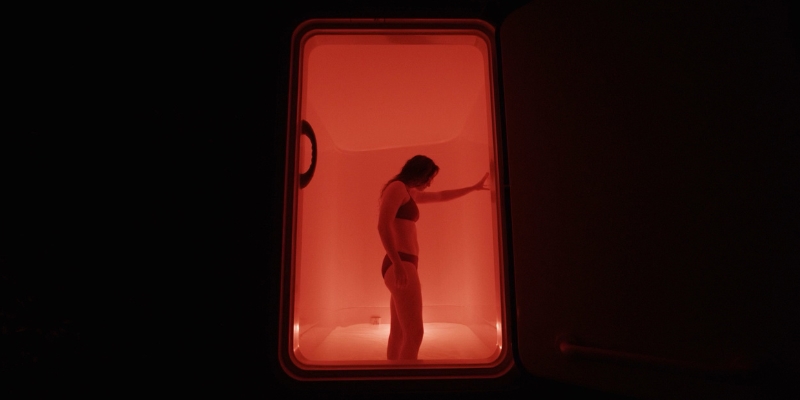The human mind rarely pauses. Thoughts run loops in the background—some conscious, many automatic. Add to that the steady stream of external stimulation, digital noise, and daily demands, and it's no wonder many people feel disconnected from their inner calm. Mindfulness and meditation have long been offered as answers, but for those who struggle to drop into a meditative state or maintain focus, floatation therapy offers a powerful aid.
Float therapy, also known as sensory deprivation or REST (Restricted Environmental Stimulation Therapy), is designed to reduce external input and allow the nervous system to enter a state of deep rest. At Altered States Wellness, our float sessions create the perfect environment to practice mindfulness and meditation more easily, even for those who’ve struggled with traditional techniques.
Why the Float Environment Enhances Meditation
The float tank provides something few other environments can: complete sensory quiet. The water is heated to match skin temperature and saturated with hundreds of pounds of Epsom salt, making the body effortlessly buoyant. Lights are dimmed or off, sound is eliminated, and physical sensations become almost imperceptible.
Without external stimulation, the brain has fewer inputs to process. This sensory reduction helps quiet the chatter that often distracts during meditation. Unlike sitting on a cushion or lying in bed, the float tank requires nothing from you. You're not fighting gravity, adjusting posture, or reacting to ambient noise. The nervous system enters a parasympathetic state more easily, allowing the mind to settle into stillness without much effort.
Float environments also support the brain’s ability to enter theta brainwave states more quickly—those slow, meditative waves often associated with creativity, intuition, and deep relaxation. While seasoned meditators might reach this state after years of practice, even first-time floaters can dip into theta within a single session.
Cultivating Presence Without Distraction
Traditional mindfulness asks for awareness of the present moment, whether through focusing on breath, bodily sensations, or thoughts as they arise. It sounds simple but can be surprisingly challenging. There's always something vying for attention—an itch, a sound, a memory, a to-do list.
Inside a float tank, many of those distractions fall away. The absence of gravity, sound, and visual stimuli makes it easier to bring attention inward. You’re left with only your breath, your thoughts, and your awareness of both. For many people, this creates a feeling of presence that feels stronger and more spacious than during a seated practice.
The first few minutes of a float session might still feel busy, mentally speaking. Thoughts may race or loop. But instead of resisting them, the float environment encourages passive observation. Thoughts come and go, like clouds across a quiet sky. With practice—or even with enough stillness—those clouds begin to clear, and the mind can rest in the simple awareness of being.
Float-Assisted Mindfulness for Beginners
People new to mindfulness or meditation often worry they’re “not doing it right.” They become discouraged when their thoughts don’t stop, or when they can’t stay focused. Float therapy softens these frustrations. By minimizing distractions, it becomes easier to accept the moment as it is—which is, essentially, the heart of mindfulness.
In the tank, you don’t need to achieve any particular mental state. The environment itself reduces the usual tension or performance anxiety around meditation. You might focus on the rhythm of your breath, follow the gentle rise and fall of thought, or simply rest in awareness of your body floating weightlessly. All of this builds the mindfulness muscle in a way that feels natural, not forced.
Many floaters say their most powerful sessions happen when they let go of trying altogether. The practice becomes less about effort and more about allowing. Mindfulness isn’t something you chase—it’s something you recognize when everything else is quiet enough for it to emerge.
Meditation Techniques to Try During a Float
There’s no one way to meditate inside a float tank, but a few approaches work especially well in this setting.

Breath awareness is perhaps the simplest and most effective. With your body still and your mind settling, focus attention on the breath entering and leaving the nose. Follow each inhale and exhale without needing to change anything. If the mind wanders, gently bring it back to the breath.
Body scanning can also be powerful, particularly in the early part of a float. Bring attention slowly through the body, part by part, noticing areas of tension or sensation. You may notice how the absence of gravity alters your awareness of physical space.
Mantra meditation involves repeating a calming word or phrase silently. The sound or rhythm of the mantra can anchor attention, especially for those whose minds tend to jump around.
Noting or labeling thoughts as they arise is another gentle practice. When a thought surfaces, mentally note it: “thinking,” “planning,” “remembering.” Then return to the breath or stillness. This creates space between you and the thought, reducing reactivity and increasing awareness.
Whether you use a structured method or just relax and observe, each session supports greater ease in your everyday mindfulness practice.
Emotional Clarity Through Stillness
Beyond reducing stress, mindfulness inside a float tank can also uncover subtle emotional patterns. When the usual noise disappears, deeper layers of thought and emotion may surface. Some people report memories arising, emotional insights appearing spontaneously, or sudden moments of clarity about decisions or relationships.
This isn’t about over-analyzing or reliving emotional content. Instead, the float tank provides a compassionate space to witness your inner life without judgment. Emotions may move through like waves—some gentle, some intense—but within the container of stillness, they don’t feel overwhelming. There’s room to breathe through them and observe how they shift.
Over time, this emotional witnessing helps strengthen inner resilience. You develop trust in your capacity to stay present, even when the content of the mind or heart feels heavy. That presence is where deep clarity and calm tend to arise.
Integration After the Float
Once a float session ends, the mind often feels spacious and open. Thoughts are slower, sensations more vivid. This is a powerful moment to carry mindfulness off the mat—or out of the tank—and into daily life.
Journaling right after a float can help anchor insights. A few sentences about what you noticed or how you felt can support integration. Others may prefer a walk, some quiet tea time, or sitting outdoors for a few minutes to absorb the experience.
The effects of mindfulness in the float tank don’t stay confined to that space. Regular float sessions can make it easier to remain grounded during stressful moments, to notice when the mind begins spiraling, and to return to presence with more grace. Meditation becomes less of a task and more of a natural state that emerges when we stop pushing.
A Unique Tool for a Modern Mind
The modern mind is rarely still. Even when we want peace, we often seek it through more doing. Float therapy offers something different: an invitation to stop doing entirely and simply be.
Inside that stillness, mindfulness and meditation take on a different texture. They become accessible, embodied, and quietly profound. For both new and experienced meditators, the float tank can be a bridge into deeper awareness and a powerful tool for reclaiming mental and emotional balance.
Altered States Wellness offers float sessions designed to support this exact kind of inner work. Whether you’re looking to deepen an existing meditation practice or take your first steps into mindfulness, floating provides the space to let the noise drop away—so what’s real, steady, and true can rise to the surface.




